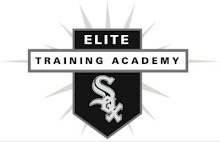The most important component of extension is hitting in a big window. Mechanics are not the most difficult part of the swing; timing is the most difficult part. Therefore, one of the benefits of having good extension is keeping the bat in the hitting zone to maximize opportunities to intersect the baseball. Thus, hitters can afford slight timing errors and still make solid contact.
Those that are familiar with my teaching know that I am big into video analysis. Through my research of literally 1,000 big league swings on slo mo video, three stand out in my mind when I think of extension. I often ask this question to the kids I teach: What do Alex Rodriguez, Albert Pujols, and Joe Mauer all have in common? The answer they start with is usually home run related. Though that answer is true, it's a by product of the answer that these guys hit with a high average every year. Those hitters will continue to do so because their bats are in the hitting zone as far or farther than any hitters that I've studied.
So what I jokingly tell hitters I'm working with that cut off extension is that for them to hit well, their timing has to be better than Albert Pujols' (which we know isn't going to happen) because their bat is hitting in a very small window. The bigger the window, the more of a chance for solid contact. The smaller the window, the likelihood of solid contact decreases unless the timing has to be nerarly perfect.
Friday, February 27, 2009
Thursday, February 26, 2009
Bat Path / Extension
My next segment of blogs deals with extention. Extention is simple in thaught and difficult to accomplish. I find myself teaching this less than I have in previous years. Here is why: Extention (or lack there of) is easy to see for an instructor. Because it's easy to identify, instructors immediately begin working to correct this flaw. As a younger instructor, I was guilty of doing the same thing. What I've learned after giving thousands of hitting lessons is that every phase of the swing must be correct for extention to be correct. If there is a flaw early in the swing, that flaw will translate into a bigger one later in the swing. Cutting off extention ends up being the result of several flaws earlier in the swing. The point is, when an instructor sees that extention is lacking, it is usually something earlier in the swing that needs corrected. Finally, when every phase up until contact is correct, extention can then be worked on. Tommorrow, I will post an extention video.
Friday, February 20, 2009
One Knee Tag Drill
Another in the "knee drill" progression. Great lead up drill for those getting ready to start practice indoors.
Monday, February 16, 2009
One knee backhand drill
It's been a few weeks since my last post, as I was on vacation. Here is a great drill for those getting ready to start their indoor practices. Backhands are tough for all infielders. I believe it is easier to learn the backhand from the kneeling position because the eyes stay connected to the glove. Infielders who struggle with this play often straighten their upper body too much, disconnecting their eyes from the glove. Notice throughout this drill that the fielder's chin will always stay over his front knee.
Tuesday, February 3, 2009
Two knees exchange video
This is the final "two knee" drill, in which the exchange to a throwing position is made. Here, make sure that the fingers of the glove come to the bare hand on the way to the throwing side shoulder. That will make the infielder have a short arm break. This is one reason I do not teach funnelling into the belly button. From the belly button, the break of the hands turns into a longer arm arc. Use this drill in conjunction with my previous "two knee" blog drills.
Subscribe to:
Posts (Atom)

